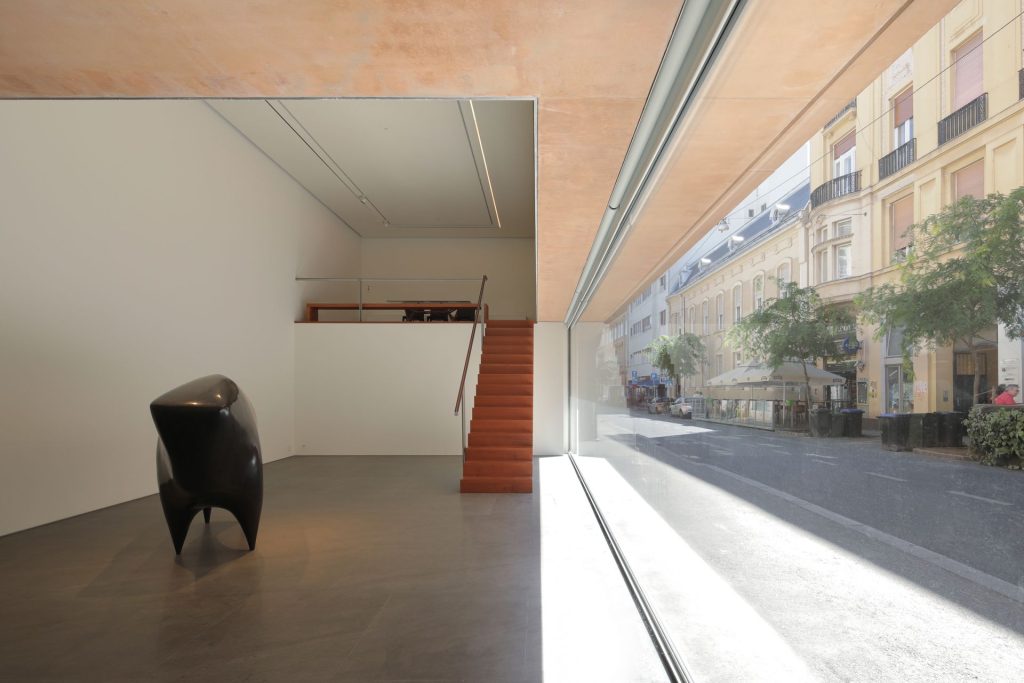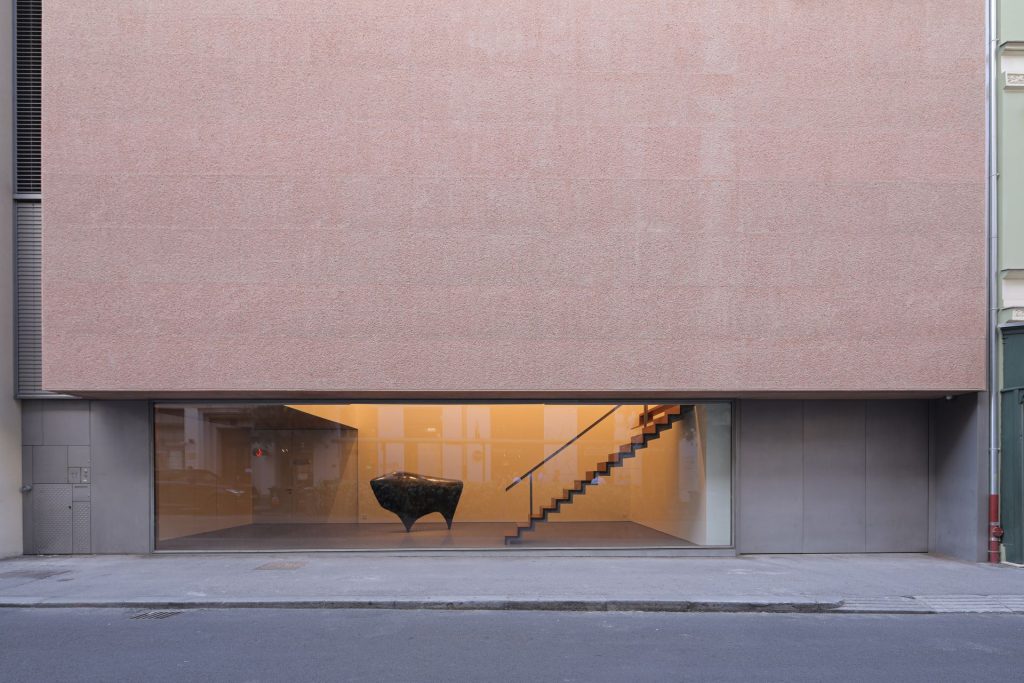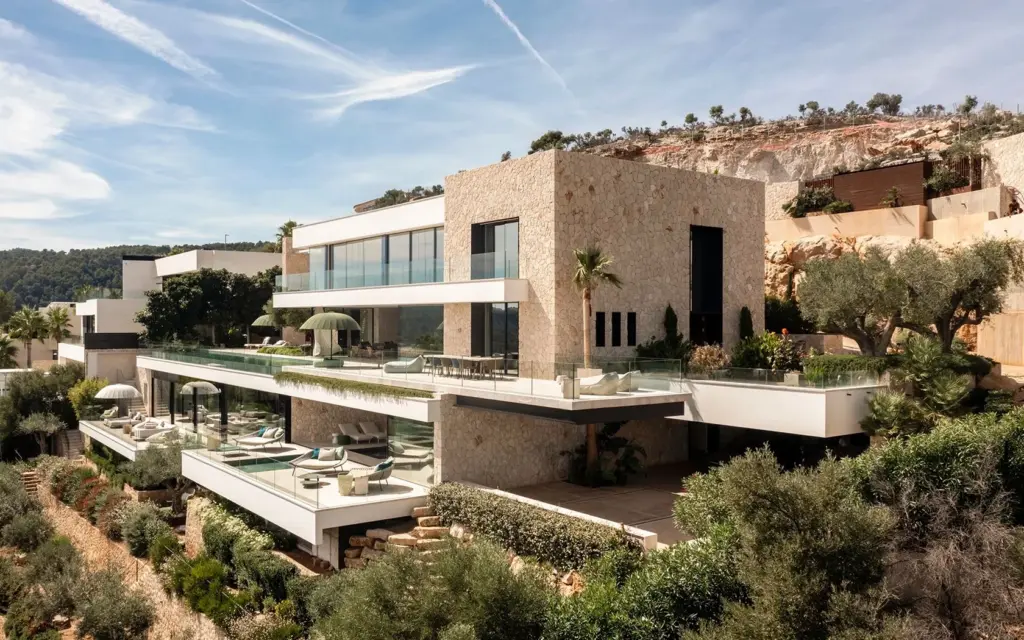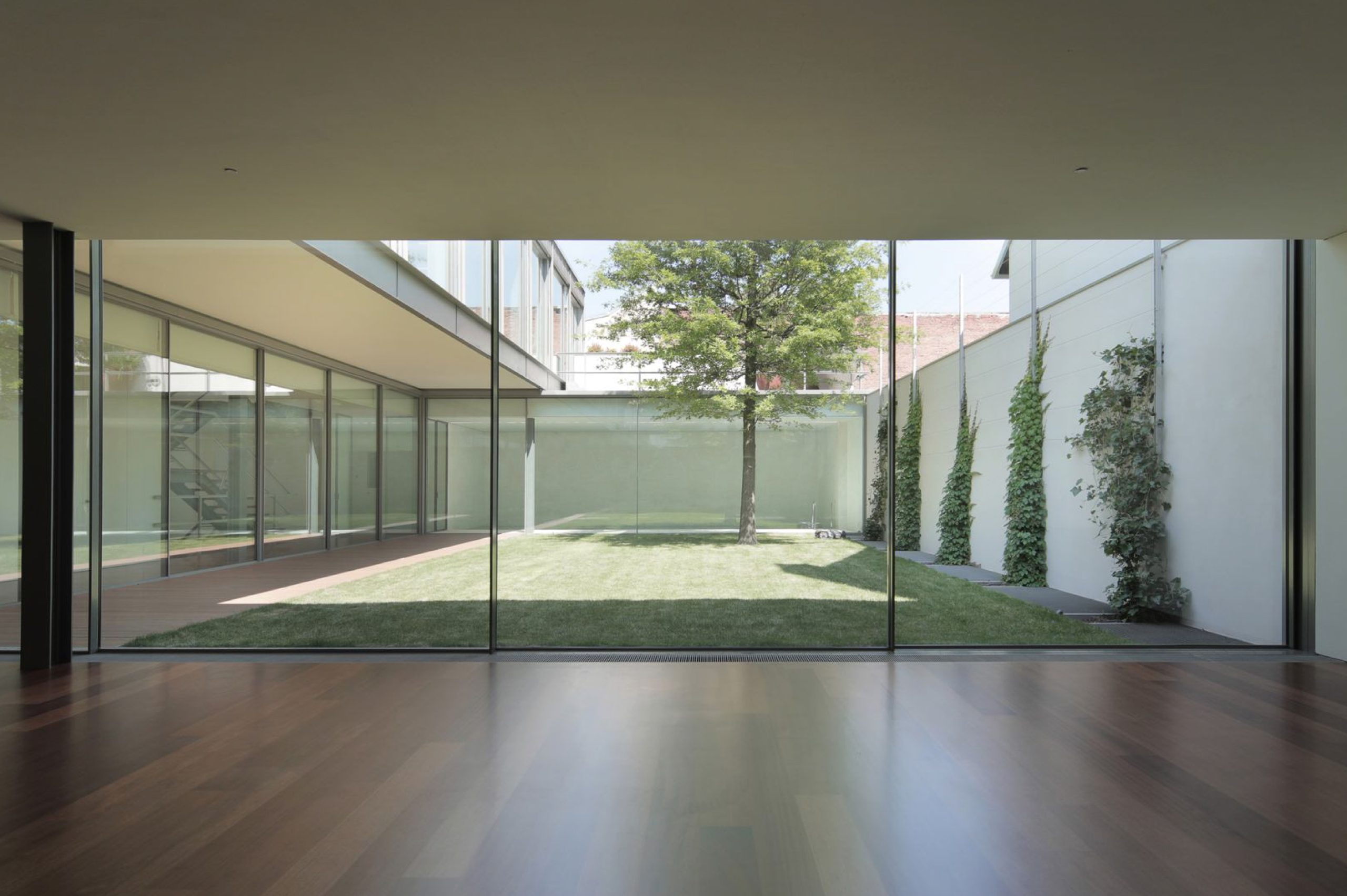Zagreb’s architectural landscape boasts a captivating gem – the Preradoviceva project by Pritzker Prize laureate Eduardo Souto de Moura with 3LHD. This minimalist masterpiece transcends the boundaries between an urban dwelling and a secluded sanctuary.
The initial impression is one of quiet elegance. The building’s seamless facade is a testament to Souto de Moura’s signature minimalist approach. Devoid of conventional windows, it creates an air of mystery, hinting at the hidden oasis within. This deliberate lack of windows on the street-facing side offers unparalleled privacy, allowing residents to retreat from the urban environment.

House in Preradoviceva | Eduardo Souto de Moura and 3LHD | © Jure Živković
However, the “windowless villa” moniker is a delightful misnomer. Stepping inside reveals a world bathed in natural light. Sunlight streams through strategically placed skylights and an ingenious central atrium designed in collaboration with local studio 3LHD. This central space acts as the heart of the home, flooding the interior with light and fostering a sense of connection to the sky above.
The minimalist aesthetic extends to the interior spaces, yet the overall feeling is understated luxury. High-quality materials and clean lines create a sense of refinement without compromising warmth and intimacy. The light-filled interior starkly contrasts with the exterior, creating a haven of tranquility within the vibrant city. OTIIMA’s Plus frame system embodies the same principles of minimalism and functionality that define Souto de Moura’s architecture.
OTIIMA PLUS boasts sleek lines and marries aesthetics with exceptional performance. The “flushed frame” design ensures seamless integration with the overall architecture, while its superior air and water resistance contributes to energy efficiency and occupant comfort. The system also excels in air permeability and resistance to wind loads, guaranteeing long-lasting durability.

House in Preradoviceva | Eduardo Souto de Moura and 3LHD | © Jure Živković
Perhaps his most famous principle, “Less is more,” summarizes Mies’ approach to design: stripping away the unnecessary to reveal the essential. His buildings are characterized by clean lines, open floor plans, and an absence of ornamentation. This philosophy encourages architects to prioritize spatial clarity and material integrity, resulting in modern and enduring structures.

© Tomeu Canyellas
1. Heydar Aliyev Center – Zaha Hadid
1. Heydar Aliyev Center – Zaha Hadid
The Preradoviceva project exemplifies how architecture can create luxurious and intimate private and connected spaces. It’s a testament to the power of design in blurring the lines between the urban environment and a personal sanctuary.
